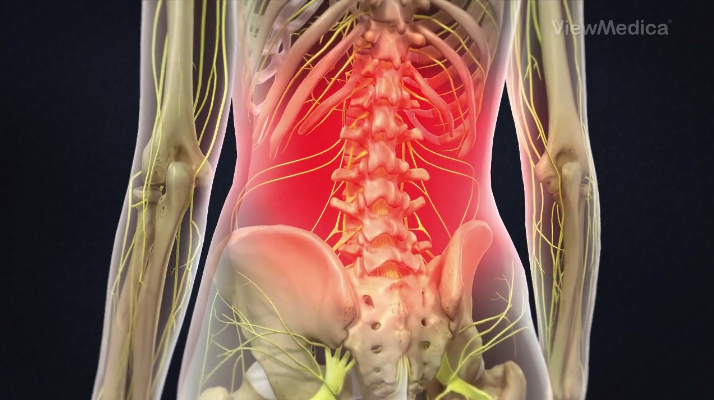This content was medically reviewed by Baher S. Yanni, MD, on August 30th, 2020.
Are you experiencing back and neck pain or a feeling of grinding when moving your spine? If you’re wondering whether you’re suffering from spinal arthritis — and what arthritis in the back feels like — know that Spine INA can help.
Spinal arthritis causes stiffness and lower back pain and may be related to autoimmune disorders, infection, wear and tear, and other conditions. Spinal arthritis is inflammation of the sacroiliac joints between the spine and pelvis or facet joints in the spine.
In this guide, we’ll take you through the causes and symptoms of spinal arthritis, as well as how it’s diagnosed and treated. We’ll also define the three different types of spinal arthritis, also called lumbar arthritis.
View this post on Instagram
Spinal Arthritis Causes
Genetic components have been identified in select forms of spinal arthritis, meaning some researchers believe it may be hereditary. The cause of arthritis in the back or neck can also vary depending on the type of arthritis.
Causes of spinal arthritis may include:
- Osteoarthritis, or OA
- Psoriatic arthritis, or PsA
- Rheumatoid arthritis, or RA
- Osteoporosis
- Enteropathic arthritis
- Spondyloarthritis
Risk Factors for Arthritis in the Back
Risk factors for spinal arthritis include:
- Excess weight or obesity
- Age
- Presence of certain conditions such as irritable bowel syndrome, psoriasis, gout, tuberculosis, Lyme disease and diabetes
Spinal Arthritis Symptoms
Symptoms of arthritis in the back vary from person to person. In general, symptoms may include:
- The feeling of grinding when moving the spine.
- Back and neck pain, especially in the lower back.
- Tenderness and swelling over the infected vertebrae.
- Headaches, in the case of arthritis in the neck.
- Numbness and pain in your legs or arms if the nerves are affected.
- Loss of flexibility and stiffness in the spine, such as not being able to turn your neck or straighten your back.
- Stiffness, swelling and pain in other areas of the body. This is especially the case in inflammatory arthritis.
- Body fatigue and weakness — this is more common in inflammatory arthritis.
How Is Spinal Arthritis Diagnosed?
Your physician may use some or all of the following diagnostic methods to confirm lumbar arthritis:
- Joint aspiration, or the testing of the synovial fluid inside the joint
- X-rays of the spine to locate the arthritic joint
- Physical exam and medical history
- Blood tests for genetic markers and/or RA antibodies
- Myelography, ST scan, MRI, bone scan and/or ultrasound to locate the damage, rule out alternate causes or detect spinal cord and nerve involvement
Types of Spinal Arthritis
There are more than 100 different types of arthritis, and most of them affect the neck or back. Here, we’ll take you through three types of spinal arthritis:
1. Spondyloarthritis
Spondyloarthritis is a set of inflammatory diseases that exert influence on both the locations and joints where the tendons and ligaments attach to the bones. There are many forms of spondyloarthritis, including:
- Reactive arthritis
- Ankylosing spondylitis
- Enteropathic arthritis
- Psoriatic arthritis
- Juvenile spondyloarthritis
- Undifferentiated spondyloarthritis
2. Rheumatoid Arthritis of the Spine
Rheumatoid arthritis, or RA, is an autoimmune disease in which the immune system attacks the synovium, or the joint lining.
Rheumatoid arthritis of the spine is considered an inflammatory arthritis because it is not caused by wear and tear. It may cause pain in the back and other joints, even when they are not in use.
3. Osteoarthritis of the Spine
Osteoarthritis of the spine is a breakdown of the discs, joints and cartilage in the lower back and neck. At times, osteoarthritis can cause weakness and pain in the legs or arms.
What Can Be Done for Arthritis in the Back?
Conventional approaches to ease arthritis back pain may include:
- Alternative treatments such as acupuncture or chiropractic manipulation.
- Medications to reduce inflammation and relieve pain.
- Physical therapy to strengthen the muscles that support the back.
- Regular exercise and weight loss, which can increase the flexibility and strength of back muscles.
- Surgical treatment to relieve pressure on the spinal nerves or spine.
How Bad Is Arthritis for Your Back?
Arthritis of the spine leads to severe inflammation and pain and can make it difficult for you to sit, stand or walk.
If you are diagnosed with spinal arthritis, your facet joints, which facilitate movement in the spine, have experienced cartilage breakdown.
Contact Spine INA for Your Spinal Pain Consultation
No matter the level of spinal pain or discomfort you feel, Spine INA understands and is here to help. Our physicians specialize in alleviating back and joint pain and are committed to providing an honest, empathetic and personalized approach.
We are leaders in spine and joint pain, and we use the most cutting-edge technology and the least invasive techniques. To learn more about arthritis in the back and how we can help, call us at (609) 371-9100 or set up an appointment for a consultation today.










